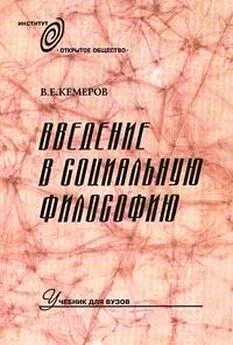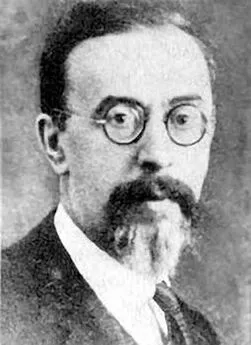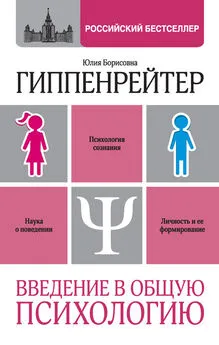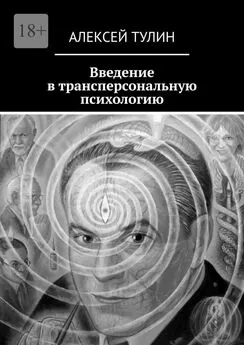Эллиот Аронсон - Общественное животное. Введение в социальную психологию
- Название:Общественное животное. Введение в социальную психологию
- Автор:
- Жанр:
- Издательство:неизвестно
- Год:неизвестен
- ISBN:нет данных
- Рейтинг:
- Избранное:Добавить в избранное
-
Отзывы:
-
Ваша оценка:
Эллиот Аронсон - Общественное животное. Введение в социальную психологию краткое содержание
Общественное животное. Введение в социальную психологию - читать онлайн бесплатно полную версию (весь текст целиком)
Интервал:
Закладка:
36. Cialdini, R., amp; Schroeder, D. (1976). Increasing compliance by legitimizing paltry contributions: When even a penny helps. Journal of Personality and Social Psychology, 34,599-604.
37. Freedman, J. (1963). Attitudinal effects of inadequate justification. Journal of Personality, 31,371-385.
38. Deci, Е. (1975). Intrinsic motivation. New York: Plenum. Deci, Е. (1971). Effects of externally mediated rewards on intrinsic motivation. Journal of Personality and Social Psychology, 18, 105-115. Deci, E., Nezlek, J., amp; Sheinman, L. (1981). Characteristics of the rewarder and intrinsic motivation of the rewardee. Journal of Personality and Social Psychology, 40, 1-10.
39. Lepper, M.R., amp; Greene, D. (1975). Turning play into work: Effects of adult surveillance and extrinsic rewards on children's intrinsic motivation. Journal of Personality and Social Psychology, 31, 479-486.
40. Aronson, E., amp; Carlsmith, J.M. (1963). Effect of the severity of threat on the devaluation of forbidden behavior. Journal of Abnormal and Social Psychology, 66, 584-588.
41. Freedman, J. (1965). Long-term behavioral effects of cognitive dissonance. Journal of Experimental Social Psychology, 1, 145-155.
42. Sears, R., Whiting, J., Nowlis, V., amp; Sears, P. (1953). Some child-rearing antecedents of aggression and dependency in young children. Genetic Psychology Monographs, 47, 135-234.
43. Aronson, E., amp; Mills, J. (1959). The effect of severity of initiation on liking for a group. Journal of Abnormal and Social Psychology, 59, 177-181.
44. Gerard, H., amp; Malhewson, G. (1966). The effects of severity of initiation on liking for a group: A replication. Journal of Experimental Social Psychology, 2, 278- 287.
45. Cooper, J. (1980). Reducing fears and increasing assertiveness: The role of dissonance reduction. Journal of Experimental Social Psychology, 16, 199-213.
46. Conway, М., amp; Ross, М. (1984). Getting what you want by revising what you had. Journal of Personality and Social Psychology, 47, 738-748.
47. Michener, J. (1971). Kent State: What happened and why. New York: Random House.
48. Ibid.
49. Davis, K., amp; Hones, E.E. (1960). Changes in interpersonal perception as a means of reducing cognitive dissonance. Journal of Abnormal and Social Psychology, 61, 402-410.
50. Glass, D. (1964). Changes in liking as a means of reducing cognitive discrepancies between self-esteem and aggression. Journal of Personality, 32, 531-549.
51. Berscheid, E., Boyce, D., amp; Walster(Hatfield), E. (1968). Retaliation as a means of restoring equity. Journal of Personality and Social Psychology, 10, 370-376.
52. Jones, E., amp; Nisbett, R. (1971). The actor and the observer: Divergent perceptions of the causes of behavior. New York: General Learning Press.
53. Shaw, G.B. (1952). In D. Russel (Ed.), Selected Prose. New York: Dodd, Mead.
54. Brehm, J. (1959). Increasing cognitive dissonance by afait-accompH. Journal of Abnormal and Social Psychology, 58, 379-382.
55. Darley,J., amp; Berscheid,E. (1967).Increased liking as aresult of the anticipation of personal contact. Human Relations, 20, 29-40.
56. Lehman, D., amp; Taylor, S.E. (1987). Date with an earthquake: Coping with a probable, unpredictable disaster. Personality and Social Psychology Bulletin, 13, 546- 555.
57. Aronson, E., amp; Mettee, D. (1968). Dishonest behavior as a function of different levels of self-esteem. Journal of Personality and Social Psychology, 9, 121-127.
58. Zimbardo, P. (1969). The cognitive control of motivation. Glencoe, IL: Scott, Foresman.
59. Brehm, J. (1962). Motivational effects of cognitive dissonance. In Nebraska Symposium on Motivation, 1962 (pp. 51-77). Lincoln: University of Nebraska Press.
60. Brehm, J., amp; Cohen, A. (1962). Explorations in cognitive dissonance. New York: Wiley.
61. Aronson, E. (1960). The cognitive and behavioral consequences of the confirmation and disconfirmation of expentancies.Unpublished manuscript, Harvard University, Aronson, E., amp; Carlsmith, J.M. (1962). Performance expectancy as a determinant of actual performance. Journal of Abnormal and Social Psychology, 65, 178-182. Aron-son, E., amp; Mettee, D.R. (1968). Dishonest behavior as a function of differential levels of induced self-esteem. Journal of Personality and Social Psychology, 9, 121-27. Nel, E., Helmreich, R., amp; Aronson, E. (1969). Opinion change in the advocate as a function of the persuasibility of his audience: A clarification of the meaning of dissonance. Journal of Personality and Social Psychology, 12, 117- 24. Aronson, E., Chase, Т., Helmreich, R., amp; Ruhnke, R. (1974). A two-factor theory of dissonance reduction: The effect of feeling stupid or feeling ‹awful› on opinion change. International Journal for Research and Communication, 3,59-74.
62. Rosenberg, M.J. (1965). When dissonance fails: On eliminating evaluation apprehension from attitude measurement. Journal of Personality and Social Psychology, 1, 28-42.
63. binder, D.L., Cooper, J., amp; Jones, E.E. (1967). Decision freedom as a determinant of the role of incentive magnitude in attitude change. Journal of Personality and Social Psychology, 6,245-254.
64. Goethals, G., Cooper, J., amp; Anahita, N. (1979). Role of foreseen, foreseeable, and unforeseeable behavioral consequences in the arousal of cognitive dissonance. Journal of Personality and Social Psychology, 37, 1179-1185.
65. Bern, D.J. (1967). Self-perception: An alternative interpretation of cognitive dissonance phenomena. Psychological Review, 74, 183-200.
66. Jones, R.A., binder, D.E., Kiesler, C.A., Zanna, M., amp; Brehm, J. W. (1968). Internal states or external stimuli: Observers' attitude judgments and the dissonance theory - self-persuasion controversy. Journal of Experimental Social Psychology, 4, 247-269. Piliavin, J.A., Piliavin, 1.M., Loewenton, E.P., McCauley, C., amp; Hammond, P. (1969). On observers' reproduction of dissonance effects: The right answers for the wrong reasons? Journal of Personality and Social Psychology, 13, 98-106.
67. Fazio, R., Zanna, M., amp; Cooper, J. (1977). Dissonance and self-perception: An integrative view of each theory's proper domain of application. Journal of Experimental Social Psychology, 13, 464-479. Ronis, D., amp; Greenwald, A. (1979). Dissonance theory revised again: Comment on the paper by Fazio, Zanna, and Cooper. Journal of Experimental Social Psychology, 15, 62-69. Fazio, R., Zanna, M., amp; Cooper, J. (1979). On the relationship of data to theory: A reply to Ronis and Greenwald. Journal of Experimental Social Psychology, 15, 70-76.
68. Pallak, M.S., amp; Pittman, T.S. (1972). General motivational effects of dissonance arousal. Journal of Personality and Social Psychology, 21, 349-358.
69. Zanna, M., amp; Cooper, J. (1974). Dissonance and the pill: An attribution approach to studying the arousal properties of dissonance. Journal of Personality and Social Psychology, 29,703-709.
70. Bond, С. (1981). Dissonance and the pill: An interpersonal simulation. Personality and Social Psychology Bulletin, 7, 398-403.
71 . Mountain West Research, Inc. (1979). Three Mile Island telephone survey. Preliminary report on procedures and findings, report submitted to the U.S. Nuclear Regulatory Commission (NUREG CR-1093).
72. News-week, April 16, 1979, pp. 93, 35. CBS News-New York Times Poll, The New York Times, April 10, 1979, pp. 1, 16.
73. Axsom, D., amp; Cooper, J. (1981). Reducing weight by reducing dissonance: The role of effort justification in inducing weight loss. In E. Aronson (Ed.), Readings aboufthe social animal (pp. 181-196). San Francisco: W.H. Freeman.
74. Stone, J., Aronson, E., Grain, A.L., Winslow, M.P., amp; Fried, C.B. (1994). Inducing hypocrisy as a means of encouraging young adults to use condorns. Personality and Social Psychology Bulletin, 20, 116-128.
75. Dicker-son, C.A., Thibodeau, R., Aronson, E., amp; Miller, D. (1992). Using cognitive dissonance to encourage water conservation. Journal of Applied Social Psychology, 22, 841-854.
76. Johnson, L.B. (1971). The vantage point: Perspectives of the presidency 1963-69. New York: Holt, Rinehart and Winston.
77. Reagan, R. (1990). An American life (p. 405). New York: Simon amp; Schuster.
1. Newsweek, April 28, 1986, p. 22.
2. Rousseau, J.-J. (1930). Thesocial contract and discources. New York: Dutton. Рус. пер. с франц. -Руссо Ж.-Ж. О причинах неравенства. СПб., 1907.
3. Freud, S. (1948). Beyond the pleasure principle. London: Hogarth Press and Institute of Psycho-Analysis. Рус. пер. с нем.: Фрейд 3. По ту сторону принципа наслаждения. - В кн.: Фрейд Зигмунд. ‹Я› и ‹Оно›. Труды разных лет. Книга 1. Тбилиси: 1991.
4. Freud, S. (1959). Why war? (letter to Albert Einstein, 1932). In E. Jones (Ed.), Collected papers (Vol. 5, p. 282). New York: Basic Books.
5. Storr, A. (1970). Human aggression. New York: Bantam.
6. Кио, Z.Y. (1961). Genesis of the cat's response to the rat. In Instinct (p. 24). Princeton, NJ: Van Nostrand.
7. Eibl-Eibesfeldt, 1. (1963). Aggressive behavior and ritualized fighting in animals. In J.H.Masserman (Ed.), Science and psychoanalysis, Vol. VI. Violence and war. New York: Crune and Stratton.
8. Scott, J.P. (1958). Aggression. Chicago: University of Chicago Press.
9. Lorenz, K. (1966). On aggression. (M.Wilson, trans.). New York: Harcourt, Brace and World. Рус. пер. с нем. - Лоренц К. Агрессия (так называемое ‹зло›). М.: Изд. группа ‹Прогресс›. ‹Универс›, 1994.
10. Berkowiti, L. (1989). Frustration-aggression hypothesis: Examination and reformulation. Psychological Bulletin, 106, 59-73.
11. Hunt, G. Т. (1940). The wars of the Iroquois. Madison: The University of Wisconsin Press.
12. Lagerspeti, K. (1979). Modification of aggressiveness in mice. In S. Feshbach and A. Fraczek (Eds.), Aggression in behavior change. New York: Praeger.
13. Lorenz.K. On aggression.
14. Washbum, S., amp; Hamburg, D. (1965). The implications ofprirnate research. In 1. DeVore (Ed.), Primate behavior: Field studies of monkeys and apes (pp. 607-622). New York: Holt, Rinehart and Winston.
15. LeBoeaf, B. (1974). Male-male competition and reproductive success in elephant seals. American Zoologist, 14, 163-176.
16. Montagu, A. (1950). On being human. New York: Hawthorne Books.
17. Kropotkin, P. (1902). Mutual aid. New York: Doubleday. Рус. пер. с англ.: Кропоткин П. Взаимная помощь как фактор эволюции. Пер. с англ. В. Батуринского под ред. автора. СПб., 1907 (В кн.: Сочинения. Т. 7).
18. Nissen, Н., amp; Crawford, М.Р. (1936). Preliminary study of food-sharing behavior in young chimpanzees. Journal of Comparative Psychology, 22, 383-419.
19. Time, October 7, 1974.
20. Leakey, R., amp; Lewin, R. (1978). People of the lake. New York: Anchor Press/ Doubleday.
21. Eisley, L. (1946). The immense journey (p.140). New York: Random House.
22. Menninger, W. (1948). Recreation and mental health. Recreation, 42, 340-346.
23. Berkowitz, L. (1993). Aggression. New York: McGraw-Hill.
24. Patterson, A. (1974, September). Hostility catharsis: A naturalistic quasi-experiment. Paper presented at the annual convention of the American Psychological Association, New Orleans.
25. Johnson, W. (1970, October). Guilt-free aggression for the troubled jock. Psychology Today, pp. 70-73.
Читать дальшеИнтервал:
Закладка:







